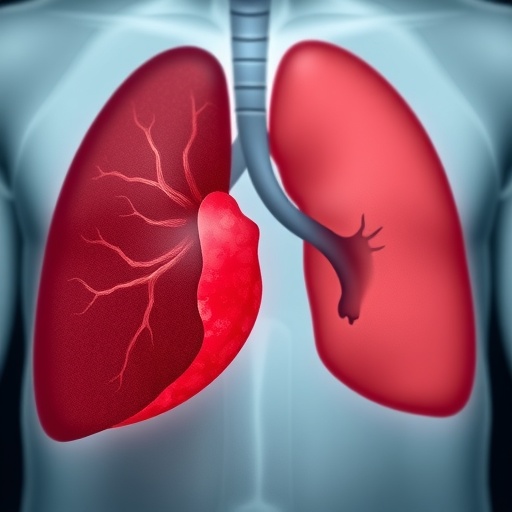In recent years, medical advances have increasingly embraced practices that push the boundaries of traditional organ donation protocols. A groundbreaking study published in the Journal of Hepatology explores the clinical outcomes and feasibility of liver transplantation using grafts obtained from donors who underwent medical assistance in dying (MAiD). This emerging approach, also known as euthanasia in certain jurisdictions, offers a novel pathway to expand the donor pool in a landscape where demand far outstrips supply. The Canadian multicenter study details compelling evidence that transplantation outcomes using livers from MAiD donors are comparable to those from standard donation after circulatory death (DCD), signaling a transformative moment in transplant medicine.
Medical assistance in dying has been legalized in a limited number of countries worldwide, including Canada, Australia, Belgium, Spain, and the Netherlands, making organ donation post-MAiD an area of increasing research interest but with limited available data. The intricate ethical, logistical, and medical nuances make this a particularly sensitive domain of organ transplantation research. Prior to this study, very few large-scale datasets had examined whether organs from MAiD donors would yield satisfactory graft and recipient survival without introducing additional risks.
The investigative team conducted a comprehensive review covering 313 liver transplantations performed across six major Canadian transplant centers between 2016 and 2023. Each case involved donors characterized by circulatory death protocols: 257 liver transplants sourced from standard donation after circulatory death (DCD type 3) were compared against 56 transplants following donation after circulatory death with MAiD as the terminal event (DCD type 5). The rigorous comparative analysis employed advanced statistical methods to ascertain graft survival, patient survival, and post-transplant complication rates.
Results from this multicenter study underscore the viability of MAiD donors as an untapped resource with clinical outcomes paralleling those of traditional donors. Survival rates among liver recipients did not statistically differ between the two cohorts, indicating that the donation-from-MAiD process does not compromise the integrity or function of the grafts. This provokes reconsideration of donor selection criteria and provides transplant teams with evidence to support expanding inclusion of MAiD donors in their programs.
Professor A.M. James Shapiro, a leading figure in liver transplantation and co-lead investigator of the study, highlights the critical public health implications of these findings. By integrating MAiD donation into standard transplant protocols, the shortage of viable liver grafts can be alleviated significantly. The study estimated that MAiD-related donations contributed to nearly a 22% increase in DCD liver transplant activity nationally over the study period, equating to approximately eight additional lifesaving transplant procedures per year.
The data also reveal a carefully regulated framework ensuring complete separation between the decision to pursue MAiD and the subsequent organ donation process. Alessandro Parente, co-lead and transplant surgeon, emphasizes the ethical safeguards in place to uphold donor autonomy and voluntariness. Stringent protocols guarantee that organ procurement decisions are made independently of the patient’s end-of-life care choices, mitigating ethical conflicts and ensuring respect for patient wishes.
From a technical perspective, the liver transplantation field faces challenges such as ischemia-reperfusion injury and donor variability, which impact graft viability. The study’s findings demonstrate that organs procured after MAiD maintain cellular integrity, metabolic function, and vascular competence comparable to other DCD livers. These insights pave the way for refining organ preservation techniques tailored to this unique donor population and optimizing recipient outcomes.
The increasing incidence of liver disease worldwide, due to factors such as viral hepatitis, non-alcoholic fatty liver disease, and hepatocellular carcinoma, underscores the urgent need for expanded donor sources. Thousands of patients remain on liver transplant waiting lists, with mortality risk rising as waiting times extend. The inclusion of MAiD donors offers a practical and ethical solution to partially offset this imbalance, reducing waiting-list mortality and improving overall transplant program efficacy.
Moreover, previous studies involving organ types beyond the liver—such as heart, kidney, and lungs—have also reported promising outcomes when using grafts from MAiD donors. This broadens the potential paradigm shift in the transplantation field, potentially revolutionizing end-of-life care and donation practices globally.
The transplantation community anticipates that the incorporation of MAiD donors will stimulate policy discussions, harmonize clinical standards, and inspire further research into optimizing donor-recipient matching and graft preservation strategies. It also brings forth psychosocial dimensions, acknowledging how organ donation can provide meaning and closure for patients and their families facing terminal illness.
Ultimately, this pioneering research highlights a profound act of human generosity—patients choosing to give the gift of life even during their final moments. MAiD organ donation exemplifies the convergence of compassionate end-of-life care and pioneering transplant medicine, resulting in a significant impact on saving lives and transforming the future of organ transplantation.
Subject of Research: People
Article Title: Utilization of liver grafts obtained from donation after medical assistance in dying: a Canadian multicenter experience
News Publication Date: 27-Oct-2025
Web References:
https://doi.org/10.1016/j.jhep.2025.08.039
References:
Parente A, Shapiro AMJ, et al. Utilization of liver grafts obtained from donation after medical assistance in dying: a Canadian multicenter experience. Journal of Hepatology. 2025.
Image Credits: Journal of Hepatology / Parente et al.
Keywords: Liver transplantation, medical assistance in dying, MAiD, organ donation, donation after circulatory death, graft survival, transplant outcomes, donor pool expansion, end-of-life care, liver graft viability, transplantation ethics, organ shortage




